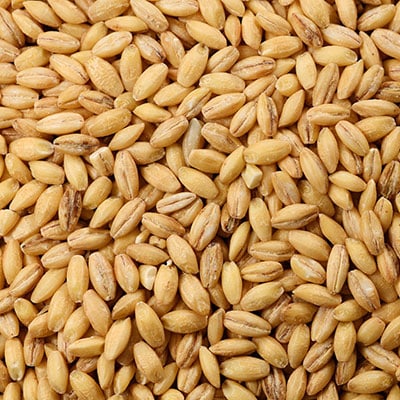Fun fact: Barley is a major source of fodder or animal food, but is also used to make malt for beer, flour, and cereal for human consumption.
 Background
Background
- Barley is a member of the Poaceae botanical family also known as the grass family.
- This botanical family consists of many cereal grains including corn, wheat, rice, millet, oats, rye, and sorghum.
Nutrition
- Barley is a good source of fiber and manganese.
- Fiber supports digestion and helps to prevent constipation.
- Manganese promotes wound healing, along with cartilage and bone formation.
How to purchase, prepare and store
- Purchase barley year-round at grocery stores.
- Two main types of barley, pearled and hulled, can be found in stores.
- Pearled barley goes through a polishing process and the outer husk is removed along with most of the bran layer resulting in a more processed grain. Pearled barley is not a whole grain.
- Hulled barley, also known as dehulled barley, is minimally processed. Only the tough outer hull is removed, resulting in a whole grain product.
- To prepare, bring 1 cup barley with 2-3 cups of water or broth to a boil. Cover the saucepan and reduce heat to simmer. Simmer until tender, 25 minutes if pearled barley or 45 minutes for hulled barley. Remove from heat and let sit for 15 minutes. If excess water remains, drain prior to using.
- Store barley in an airtight container in a dark cool place for up to one year.
- Use barley as a side dish in recipes, add to soups, salads, or casseroles.
Nutrition Facts
Pearled barley, cooked, 1/2 cup
- Calories: 96.5
- Protein: 1.7 g
- Fat: 0.3 g
- Carbohydrate: 22 g
- Fiber: 2.9 g
- Calcium: 8.6 mg
- Iron: 1.0 mg
- Magnesium: 17.2 mg
- Phosphorus: 42.4 mg
- Folate: 12.5 μg
- Vitamin A: 0.0 μg
Via fdc.nal.usda.gov
Recipes
Request an Appointment